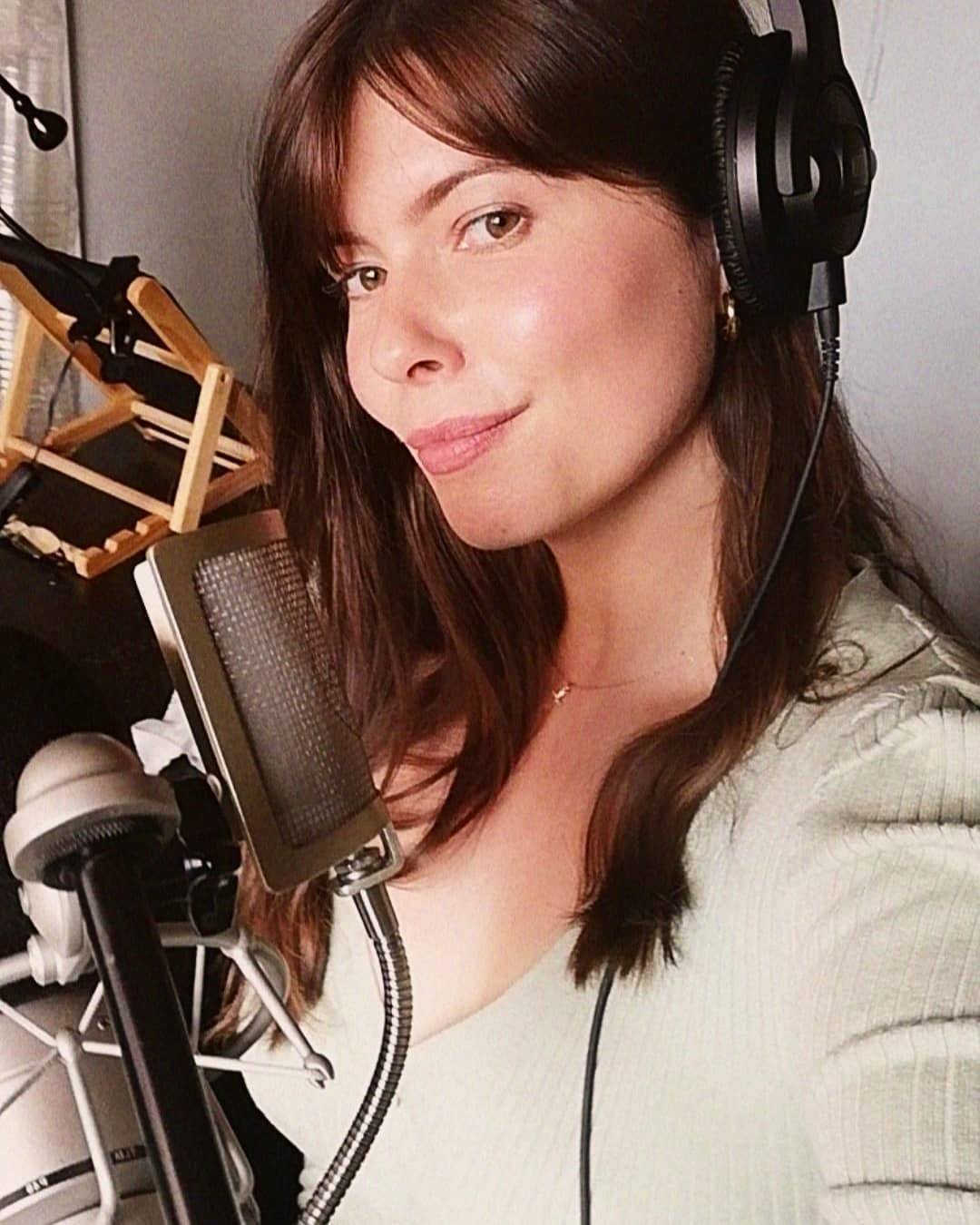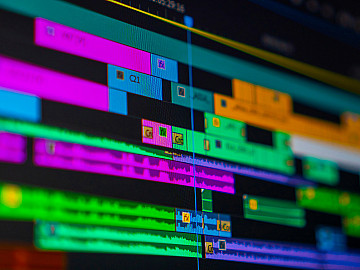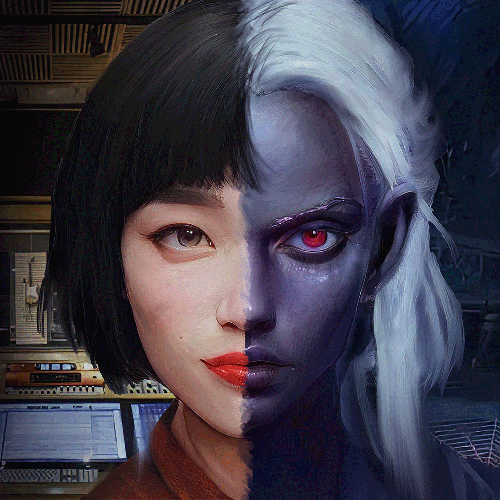On episode 17, series 24 of The Graham Norton Show. Graham Norton quipped that voice-over was the 'easiest job in the world.' And this from a man who drinks Chardonnay and chinwags for a living. Yet, who’d want to be a voice-over artist when you hear that? No, really.
You're an actor, but not quite. Whilst voice-over is still very much a performance, you rarely appear on camera. And whilst many voice-over artists are attracted to the craft for this very reason, it does make it an invisible art.
That is, it's not about how you look, it's about how you sound. You're hidden from view.
For this reason, people will often assume it's simpler than acting on camera, 'you're just speaking into a microphone is a comment I've heard from more than one person in the past. Are they right?
Completely unrelated, but the same Graham Norton Show episode, featured Sir Patrick Stewart, voicing the Star Trek character, Jean-Luc Picard in a French accent. Hilarious and very 'Allo 'Allo!
Ruth Urquhart on Twitter says:
If you are a celebrity and asked to go for 20 minutes to a studio to talk in your own voice and whatever you do it is considered fine because you are a celebrity maybe it is easy! But that is not the case for the majority of voice artists.
— Ruth Urquhart Voice Artist (@RuthUrquhart1) April 16, 2019
Of course, it's not easy! If it were easy, it wouldn't be valued. That’s why the ‘artist’ bit of being a voice-over artist is so important. @testavoz summed this up neatly:
“It’s not [easy]! I remember when my mother said : “ohh that’s what you do?! It only took you like 10 mins to do this record” (she is a doctor) and I said: yeah but it took me 10 years to train my self and voice to be able to make that record in 10 min.”
Being a voice-over artist is a job that combines a very particular set of skills. Skills that are acquired and grow over a lifetime, such as:
- rapid and accurate sight-reading
- excellent microphone technique
- a keen sense of timing
- amazing vocal stamina
- responding swiftly (and in a non-personal and graceful way) to direction; a direction which can often be conflicting and ultimately nonsensical. Especially, when the room on the other side of the glass is filled with clients and agency people all voicing their own separate opinions.
Yikes. @john_grimes_voice takes a swipe at Graham's comment too:
“Definitely not easy- what convinces others that it’s easy is that we all speak. We all can’t necessarily sing, play a guitar, or dance, but we all can speak. Place Graham in front of a mic, allow him 30 seconds to say a minute worth of copy, and then be sure everyone who hears it believes what he’s saying. It also needs to be perfectly enunciated, the client doesn’t want the message lost or garbled. What he misses is that the creativity of VO comes on the fly and from practice: it “sounds” effortless. Unlike an author, or a singer, the VO is given a script. How many singers can produce a good cover song of another artist that’s new and authentic yet true to the sound? In the case of many well-known brands, the VO artist produces a new sound on an existing brand. Maybe the show should put Graham through the paces for a day with someone like @jmichaelcollins“
Well said, John.
You also need the ability to talk really, really fast whilst staying completely clear – Ts and Cs style – combined with the ability to clearly characterise and emote a wide variety of copy. And all of these skills must converge together to make a good voice-over artist. Sound easy?
With the ability to say up to 11 words per second, John Moschitta broke the world record and made a career out of his dizzying cadence.
'Copy', by the way, is industry-speak for the written script that a voice-over artist reads.
And this could be anything:
- an in-house corporate video
- an advertisement or promo/commercial
- a product Explainer
- the lines from a film script that you’ve been called in to overdub another actor because of accent, language or performance
- an animated character
- a video game character
- a radio or audio drama
- an audio-book narration
- a documentary voice-over
- passenger announcements
- and many, many more
Phew! That's a lot of different modalities and skills that need mastering, and these are only some of the types of copy that a voice-over artist is expected to bring to life using their vocal abilities.
The definition of a 'voice-over artist'
The etymology of the verb 'animate' means 'to fill with boldness or courage.' It comes from the Latin animates, a past participle of animare, which means 'give breath to,' or to 'endow with a particular spirit.' The noun 'voice' means the 'sound made by the human mouth,' and comes from the Old French voiz, meaning, 'voice', but also 'speech', 'word', 'saying' and 'rumour'.
ALSO READ: Why Cheap Voice-Overs Will Cost You More
In Old English, it takes on nobler associations, where it is defined as 'invisible spirit or force that directs or suggests'. This was usually used in the context of insanity, as in to hear voices in (one's) head, but still. So, according to centuries of etymology, here's the definition of what a voice-over artist is, one that courageously breathes life into the written word with the invisible force within them. A pretty noble calling. Take that, Graham Norton.
But what do you think a voice-over artist is?

Of course, there are iconic ideas of 'the voice-over' that most people will recognise, like:
- Michael Buffer – the 'Let’s get ready to rumble!' guy
- Don LaFontaine – the 'In a world.' movie trailer guy
- Dervla Kirwan – the oh-so-sensual 'This is not just food.' M&S lady
And that's just scratching the surface. There are experiences in everyday life that just wouldn't be the same without a voice structuring them, such as taking a trip on the tube.
Over the years the London Underground has been characterised by a number of different voices, all with their unique brand of authority, but it has always retained its iconic status (even in the face of my immature sense of humour!).

And how does one sound authoritative or even iconic anyway? Usually the result of years of practice.
@nicredvoice “Well, it’s not like we’re down a mine, but it certainly take a specific set of skills to make it seem easy “ And @itsbobhonest agrees: “The determining factor is the effort you invest to get there… “
Breathing life into the invisible is all the more interesting now in the context of the growth of artificial intelligence products and their association with the human voice, and, naturally, the voice-over artist behind them. You’ve got Alexa on Amazon Echo, and now Google Home, which Verge magazine describes as:
“a small speaker you plug into the wall with always-listening, far-field microphones that can hear you from across the room. It'll answer your questions, play your music, and control some of your home automation gadgets.'
So, now, thanks to technology, voice-over artists are part of the fabric of life and the home.
The voice-over artist is an assistant, a guide, a confidante, an advisor, a friend, almost a member of the family. Then there are the robots, and even sex robots, such as Harmony, the human-sized, customisable, soft-skinned ‘pleasure’ doll and app, which has been created to offer human-style companionship and affection to lonely punters. All given voice, by professional voice-over talents.
A voice has power
The voice-over artist has the power to become something else, whether that's an animated two-dimensional character on a screen or an imagined person behind a radio ad. They can 'breathe life' into physicalized artificial intelligence, found on your phone and wearable tech. And they can make a real difference to audience engagement with your content.
Does being an actor help?
It certainly helps with character voicing for things like film dubbing, animations and narration. But there are many skills necessary to voice-over work that not all actors possess inherently and may not be able to learn. It's a niche set of skills—and industry, for that matter. Although more and more people who leave drama school each year turn to voice-over jobs as another potential income stream, not every actor—in fact quite a small percentage—manage to book jobs regularly.
But the real skill where a voice artist earns their value is how they can embrace the unexciting, the dull and uninspired as their own, with gusto, energy, and warmth still present after hours of reading.
Yes, you can use Betty on reception (and hey, I love Betty too, she's lovely) to voice your telephone IVR greetings, but does her voice represent your company brand in the best possible light?
Probably not.
Like any art, masters of their craft make it look easy.
@voiceovergirl “The skill is to make it l k easy “
Find Voice Actors
Voice-Over Jobs at Voquent
Sometimes we include links to online retail stores such as Amazon. As an Amazon Associate, if you click on a link and make a
purchase, we may receive a small commission at no additional cost to you.


















